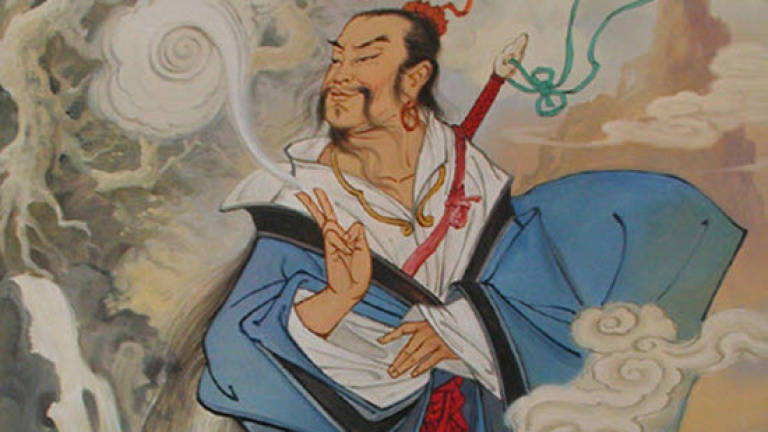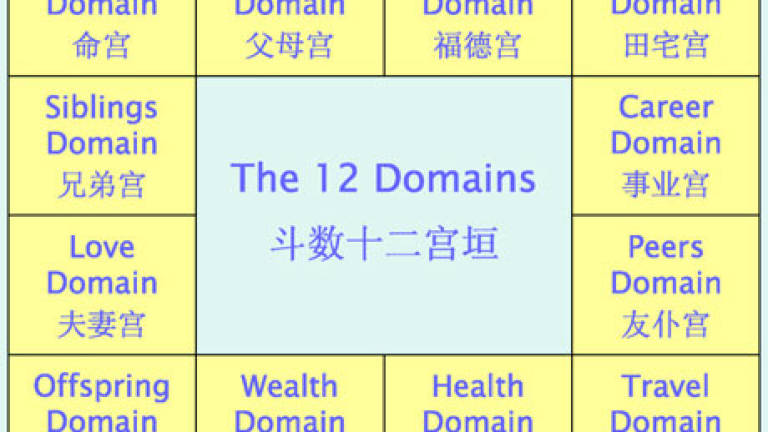Astrology with royal roots


Zi Wei Dou Shu is a destiny and luck analysis system like Zi Ping BaZi. In the hands of capable practitioners, both systems yield more or less the same results.
However, their approach is markedly different. It is said that BaZi focuses on qi while Zi Wei is the study of shu or calculations.
While BaZi was widely available to everyone to practise, Zi Wei was only reserved for use by the emperor and the palace.
Maybe that is why it is also known as the emperor astrology.
The knowledge of Zi Wei Dou Shu only became available to the public towards the late Qing Dynasty after some books were allegedly stolen from the palace.
Zi Wei was reputedly invented by Chen Xi-yi, a monk who lived during the Song Dynasty about 1,000 years ago, although some researchers believe that it was Lu Dong-bing (pix), one of the Eight Immortals who lived during the late Tang Dynasty, who developed the system.
Some even speculated that the Eight Immortals were Nestorian monks who were well-versed in astrology, whose presence was well documented in China during the Tang and Song Dynasties.
Zi Wei Dou Shu's birth chart also share some resemblence to western and Hindu astrology.
I have compared readings done with Zi Wei and BaZi and I see somewhat similar results as it should be.
This brings to mind the words of Ip Man in the Ip Man movies.
He said: "It is not whether the northern style or southern style kung fu is better. It is the practitioner."
While on the subject of northern and southern styles, there is also such a distinction in Zi Wei.
One is known as the Tri Harmony (San He) method while the other, the Four Transformation (of Si Hua) method. Both methods use the same birth chart.
However, the Tri Harmony method places more importance in the stars and it is not uncommon for practitioners of this style to use many stars – sometimes up to 108 of them plus or minus.
The Four Transformation style places more importance in the transformation of the Heavenly Stems and they employ much lesser stars, as low as 18 major and supplementary stars.
Why these two styles?
Legend has it that one set of books which focuses on Tri Harmony was stolen and found its way to the South, while the other which focuses on Four Transformation was stolen and found its way to the North.
No one knows what really happened. We just have to remember that there are two main methods, and that one places more importance on the stars while the other, on the transformation of the Heavenly Stems.
One marked difference that I notice between Zi Wei and BaZi – and not all BaZi practitioners will agree with me – is that you can make a faster reading with Zi Wei.
For me, using BaZi to study the Stem and Branch of the year, month, date and time of birth in collaboration with the Stem and Branch of the decade, years, etc is like looking at raw data.
It takes a while to analyse them before arriving at a conclusion.
With Zi Wei, it is like raw data that has been translated into meaningful charts. The practitioner can simply look at them and make an inference much faster.
The methodology for plotting a Zi Wei Dou Shu birth chart using the year, month and hour of birth, together with gender, is well documented.
However, no one can tell why the chart is plotted in such a way.
Unlike western astrology using the position of stars (Sun, Moon and planets), Zi Wei uses a set of stars with Chinese names such as Zi Wei, Tian Ji, Tai Yang, Tian Tong, etc, which many practitioners believe are imaginary stars.
Recently, I met a local researcher who positulated that these Zi Wei stars are representation of real stars and their movement (meaning the Sun, Moon and planets).
In his book, he presented convincing arguments of their astronomical equivalent.
For example, he argued that the sunspot activity on the surface of the Sun is not constant.
As the Earth revolves around the Sun, it is exposed to different sunspot activities which in turn influence those differently, depending on the month of birth.
He also explained how the Sun's energy is different in alternate years resulting in what we know as yin and yang years.
Henry Fong is an electronic engineer by qualification and he approaches feng shui with the same analytical and investigative approach he uses in his training.
Readers can write to him at lifestyle.henryfong@thesundaily.com.